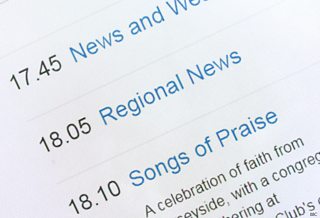
The death of Princess Diana 20 years ago came as such a shock that many people remember where they were when they heard the news.
With such a major breaking news event, the scheduled programmes for all �������� channels were affected, not only on the day of Diana’s death, Sunday 31 August, but for the succeeding week until her funeral on Saturday 6 September.
As with other major events that changed the broadcast schedule, it is sometimes pointed out to us that the Genome database does not reflect reality, but just what was printed in Radio Times. At this stage in the development of �������� Genome this is indeed the case, although in the future we hope to be able to reflect the actual transmission details, while retaining the scheduled details for historical interest. Here, we look at what was actually broadcast on 31 August 1997.
The change to the ��������’s schedules was most marked on 31 August. At this time – although plans were afoot for introducing it – there was no domestic 24-hour news channel from the ��������, as �������� News 24 (now the �������� News Channel) did not begin transmissions until November 1997. However, there was the �������� World television channel, and for the first time viewers in the UK were able to see this channel as it was rebroadcast on �������� One from 2.30am.
In consultation with the then Director General John Birt, the �������� decided to devote its output on ��������1 to a rolling news programme for the rest of the day until 5.50pm, when regional news was followed by a news bulletin and then a specially arranged service from St Paul’s Cathedral in memory of Diana.
There then followed a repeat of the documentary, Diary of a Princess, first broadcast earlier in the year. An obituary programme, Diana: a Tribute, was on at 8pm, followed by another news bulletin and repeats of Diary of a Princess and the St Paul’s Service. At 11.42 pm the first of several programmes of personal thoughts about Diana, entitled Reflections, was broadcast.

While �������� One was given over to tribute programmes, abandoning the whole planned schedule, �������� Two attempted to give some kind of alternative, with a mixture of planned programmes. Some moved from �������� One, such as the first episode of Michael Palin’s new series Full Circle. Again though, large parts of the schedule were dropped. At this time, not only was there no news channel, this was still the era of there being only two analogue �������� channels in the UK – no �������� Three or Four.
After the initial shock and rapid replanning of Sunday, came changes to the rest of the week. The �������� broadcast most of the programmes it had planned, with certain notable exceptions. Some programmes that had themes that might be seen as tasteless were replaced, often with different episodes of the same series. These ranged from episodes of the discussion show Esther to Only Fools and Horses. A number of feature films, especially those involving horror or violence, were substituted. Several new series were held back, such as the sitcom Bloomin’ Marvellous.
There were also some extra tribute programmes, a special edition of Kilroy and episodes of the camcorder strand Video Nation, which were broadcast at the same time each night across the week, just before Newsnight.
By Wednesday however, the schedule was followed, other than some of the postponed programmes from the weekend starting to be shown. Thursday’s schedules were almost entirely as listed in Radio Times.

On Friday, things were somewhat different. The Queen had returned to London from Balmoral, and senior royals including Princes William and Harry made public appearances at Buckingham Palace: this was covered live on �������� One. At 6pm that evening the Queen made a special broadcast in tribute to Diana, carried on �������� One and �������� Two. Later, there was a special news programme covering the developing events, presented by David Dimbleby, and at 10.30pm there was a report on the ‘People’s Vigil’ prior to Diana’s funeral, planned for the following morning.
Much of the early evening �������� One schedule was cancelled, as were the two late films. But given that the planned vintage Parkinson interview with Ingrid Bergman was shown, it was appropriate that it was followed by a chance to see her most famous role in Casablanca. The last programme that night however was a repeat showing of a prayer by Mother Theresa of Calcutta – a tribute to her, following her death that day, Friday, 5 September.
Saturday 6 September was the day of Diana’s funeral, and again the �������� One schedule was abandoned altogether. The funeral coverage began at 6am, and continued until nearly 4 in the afternoon. Later, there was a programme showing some of the funeral and its extraordinary scenes at 10pm.
Due to advance printing, Radio Times did not reflect Diana’s death until 11 September. The magazine ran a tribute front cover and articles on Princess Diana in which she was remembered for her roles as a public figure, a humanitarian and a mother to two young sons.
